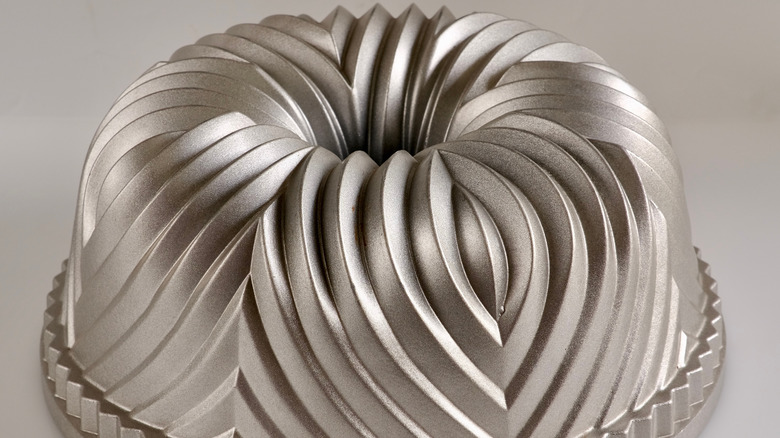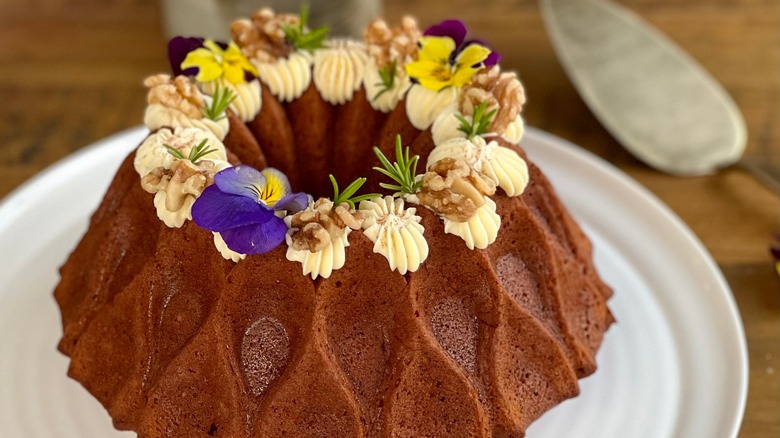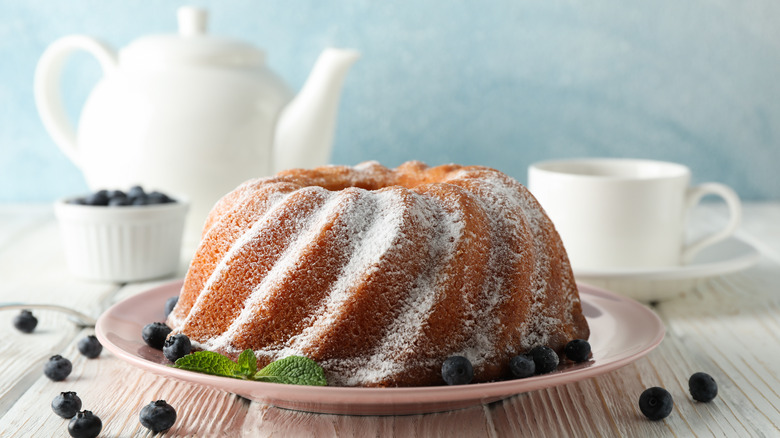What To Avoid When Buying A Bundt Cake Pan
I think we can all agree that a cake of any kind is beautiful. Even when it's not an Instagram-ready masterpiece, an iconic slice will always look pretty delicious. That said, for those who like a slightly fancier aesthetic but don't have a pastry school decorating degree or perfect piping or sculpting skills, there is a super easy way to create a truly head-turning confection. Patterned bundt cake pans come in all kinds of designs and require no work beyond pouring your batter and popping it in the oven.
There are some factors to consider when choosing your patterned vessel, though, and one major thing you want to steer clear of is opting for designs that are less distinctive in their details. From an aesthetic standpoint, this is simply less satisfying. And given the wide breadth of options out there for well-defined pans, it makes better sense — and whipping up more breathtaking presentations — a piece of cake.
Why go for more defined patterns in your pan
Part of the reason you want to avoid pans with more subtle patterns is the possibility that they won't leave their mark on your cake. As your batter bakes and rises, if the ridges or lines aren't deep or defined enough, you could wind up with a finished product that has very little shape at all (aside from being round). On the other hand, those well-defined pans make a beautifully dramatic presentation and give you legible designs with clean ridges and corners.
There is some debate about whether you'll be able to get as much of your glaze or frosting into those nooks and crannies, but there is no question that even without topping your bundt cake, you'll still have an eye-catching confection if you leave the indistinct options on the shelf.
When it comes to more finely designed bundt pans, however, it can be a little trickier to get them properly greased. This is one of those instances in which it can be a bad idea to line your cake pan with parchment, but fortunately, there are other ways to make your cake release cleanly. For one thing, opting for a non-stick option will give you a head start. You can also try out a simple paste that makes removing bundt cakes effortless and is a snap to mix together. It's also important to let your cake cool so it doesn't fall apart when you flip it.
Getting your best bundt
Of course, there's always a chance that something could go wrong, no matter how many preparatory pains you take. Although you may have had an ornate and unadorned presentation in mind, this is where a glaze or frosting — or even a dusting of powdered sugar or sifted cocoa — can come in handy to perform a little cover-up work. Fortunately, since the pan is already patterned, it's pretty easy to try again next time around, and there are plenty of reasons to return to the bundt.
Bundt cakes are such a fun format for baking projects, and they make an ideal centerpiece, whether it's for a special occasion or a Sunday brunch. But it is a functional one, too. There's even a scientific reason bundt pans are perfect for thick cake batter — you get a more even heat distribution as opposed to a traditional vessel for those deliberately heavier preparations, meaning no soupy centers. They're also perfectly suitable for so many traditional or inventive options, whether it's a classic pound cake, fruity banana cake, a mesmerizing marble, or even a layered look. By avoiding those less-defined pattern pans, you can expect a cake that's a true conversation start, no matter what.


